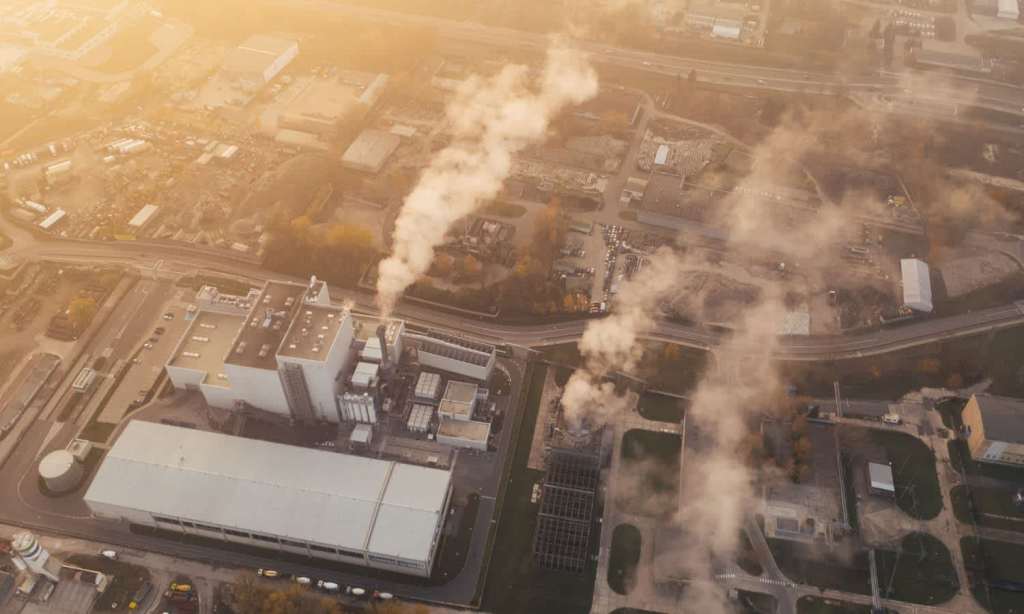Have we been getting it wrong this whole time? When you hear the word carbon, you immediately think of emissions, which we know are really bad for our environment.
When we talk about carbon emissions, we’re mainly referring to carbon dioxide or CO2. The largest source of natural carbon emissions is from the exchange of carbon dioxide between the oceans and the atmosphere. Animals, plants and humans also emit CO2 through breathing in oxygen and breathing out CO2, so when these animals, plants and humans decompose, organisms within the soil respire to produce energy and emit more CO2 into the atmosphere.
We also emit loads of CO2 into the atmosphere when we extract, refine and burn fossil fuels like natural gas, oil and coal, which releases extra carbon and other nasty greenhouse gasses into the atmosphere.
In simple terms, we’re emitting more carbon than we’re able to absorb. By cutting down trees and other agriculture to make way for new developments, we’re removing the natural systems that absorb and store carbon.
Basically, we’re growing too quickly for our atmosphere to handle. As we grow in population and urban developments, our environment is becoming increasingly unable to absorb the carbon we’re emitting, which fuels the destructive beast we call climate change.
Our natural environment can’t keep up with our use of carbon and if we keep going like this, earth will basically implode.
According to leading design publication Dezeen’s editor-in-chief Marcus Fairs, carbon is beginning to be seen as a potential saviour of our civilisation, rather than its nemesis.
To some, carbon is starting to be seen as the most valuable resource on earth, as a way to reverse climate change, such as a company called Climeworks, who are working on a technology that sucks carbon out of the atmosphere and turns it into useful materials.
“We capture CO2 from the atmosphere,” said Christoph Beuttler, head of climate policy at the Swiss company. “We’re mining the sky because there’s too much carbon in it. And it’s a sustainable resource.”
Climeworks has developed direct air capture (DAC) devices that extract carbon dioxide from the atmosphere, which they then distribute in two ways.
The first, is by storing it. The DAC technology, combined with the storage process developed by the Icelandic company Carbfix, removes carbon dioxide from the air and stores it safely underground.
Their second option, is to recycle it and turn it into raw materials. Pure carbon dioxide can actually be used to produce renewable, carbon-neutral fuels and materials. Climeworks has partnered with companies Kopernikus Power-to-X, STORE&GO and Celbicon, that can produce energy, renewable gases and raw materials from their captured carbon dioxide.
Carbon dioxide can also be used in producing concrete, of which Montreal-based company CarbiCrete, are leading in.
“We’re taking CO2 out of the system every time we make a block,” CarbiCrete CEO Chris Stern told Dezeen.
Basically, they make concrete in a very similar way to the tradition method, but with a few key differences. Cement is replaced with steel slag, which is then poured into a conventional block-making machine where the CMUs are formed. Then, in order to cure the concrete, it’s placed into a specialised absorption chamber where the CO2 is injected.
Within 24 hours, the concrete has reached full-strength, is now deemed carbon negative and it ready to use.
So, if we can extract nasty carbon emissions from the atmosphere and turn them into building materials such as concrete, then earth may actually have some hope yet.
The more carbon emission we can put to good use, the better. The less carbon dioxide we emit into the atmosphere, better again. Things such as plastic waste make a huge contribution to our carbon emission, which is why so many countries are creating plans to be carbon-neutral.
The thing is, it’s going to take more than getting rid of single-use plastics to help mend our atmosphere. For decades, we’ve been using more carbon dioxide than our environment can absorb, and it’s destroying our planet.
But instead of looking at CO2 as the enemy, these technology and materials companies have discovered ways to remove from the atmosphere and utilise the CO2 for good, which could not only save our environment, but the economy too.
We have too much CO2. Let’s use it for building a future, rather than destroying it.
Read more stories from The Latch and subscribe to our email newsletter.







